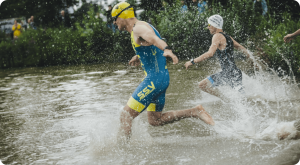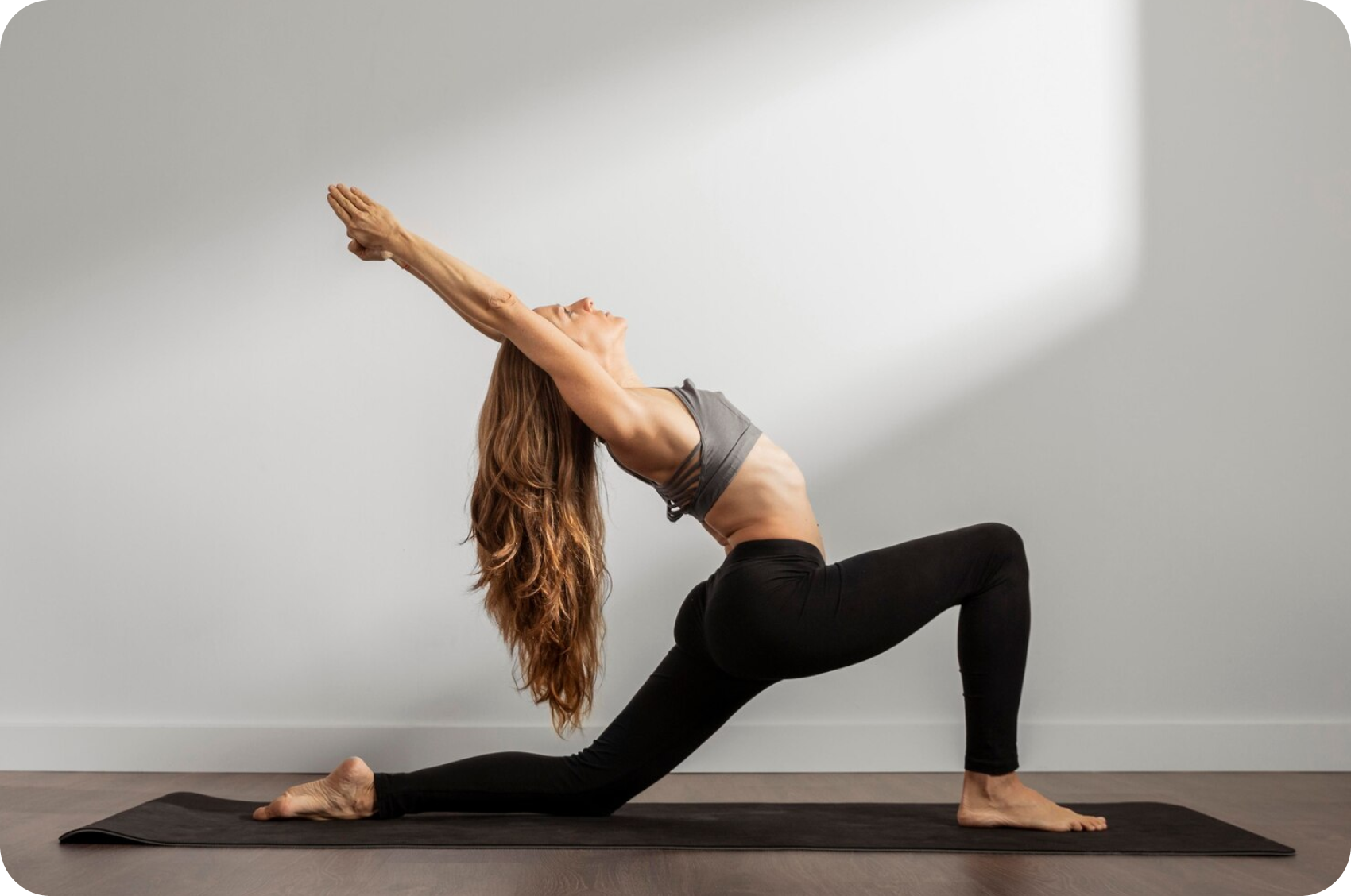Swimming is a fundamental component of triathlon, requiring a unique set of skills and training strategies.
To succeed in the swimming portion of a triathlon, it is important to focus on technique.
Specifically, performing targeted exercises and following an effective training program.
In this article, we’ll dive into the world of triathlon swim workouts by exploring different techniques and exercises. We will also look at the triathlon swimming training plan.
We’ll explain how they can improve your performance and set you up for triathlon success.
Whether you’re training for your first sprint triathlon or aiming to improve your swim speed, these tips and examples will help you on your journey.
Let’s get started!
The Importance of Technique in Triathlon Swim Training
How you swim can make or break your race. Technique is everything.
This section focuses on why technique matters so much in swim training for triathlons.
We’ll cover body positioning, stroke mechanics, and breathing technique — key areas that can help you swim faster and smarter. Mastering these basics is essential for success in the water and on the course.
Body Positioning
Proper body positioning is crucial for efficient swimming. Starting your first triathlon, whether it is a sprint race or an Olympic distance triathlon, you should focus on achieving the following:
1. Proper alignment.
Aim to keep your body in a straight line from head to toe. This reduces drag and improves your swimming speed.
Tips: Imagine you’re a surfboard floating on the water’s surface, with your body extended and aligned.
2. Engaging core muscles.
Developing a strong core helps stabilize your body and maintain proper posture throughout the swim.

Stroke Mechanics
Mastering the technique of your strokes is essential for efficient propulsion through the water. Focus on the following aspects:
1. Freestyle stroke breakdown.
Break down your freestyle stroke into its key components. Include warm-up, arm movement, body rotation, and stroke technique.
Tips: During the arm extension phase, imagine pulling your arm straight back past your hip. Use the entire area of the hand and forearm to maximize pushing.
2. Entry, catch, and pull.
Pay attention to the entry of the hand into the water.
Specifically, the gripping phase is when the hand gains traction and the subsequent push moves the body forward.
Tips: Imagine your hand entering the water gently, with your fingertips first, followed by a firm grip and pulling the water back towards your hip.
Breathing Technique
Proper breathing technique is vital for maintaining rhythm and efficiency in the water. Consider the following tips:
1. Timing and coordination.
Coordinate your breathing with your stroke pattern for smooth and efficient breathing.
Tips: Breathe out steadily through your nose and mouth underwater and inhale quickly to the side during the recovery phase of your arm stroke.
2. Bilateral breathing benefits.
Incorporate bilateral breathing (breathing on both sides).
This will help improve balance and adaptability and reduce muscle imbalances.
Tips: Practice breathing to the right on one lap and then switch to breathing to the left on the next lap, ensuring balanced muscle development.
Effective Swim Drills for Triathlon Training
Body Positioning Drills
Drills focusing on body positioning help improve efficiency and reduce resistance in the water, and most importantly, help prevent triathlon injuries. Consider the following drills:
1. Superman glide.
Start by pushing off the wall or kicking gently with a kickboard while extending your body into a streamlined position.
Focus on maintaining a straight line and minimizing any unnecessary movements.
2. Kickboard drills.
Use a kickboard to isolate your lower body and concentrate on body alignment and kick technique.
Tips: Hold the kickboard with both hands and push off while keeping your face in the water. Maintain a streamlined body position and focus on a confident and powerful kick.
Stroke Technique Drills
Drills that target stroke technique help refine your movements and enhance efficiency.
Try incorporating the following drills:
1. Catch-up drill.
Begin by swimming freestyle and pause after each stroke, allowing your recovering arm to catch up with the other arm before starting the next stroke.
This drill helps improve arm extension, timing, and body rotation.
2. Fist drill.
Swim freestyle with your fists closed, without using your hands, to improve your water feel.
In doing so, engage your forearms and overall stroke efficiency.
Tips: Clench your fists as if you were gripping something tightly and swim freestyle. At the same time, focus on maintaining a smooth and powerful forearm stroke.
Breathing Drills
Your key swim workouts should incorporate exercises that focus on breathing techniques and control, contributing to better oxygen consumption.
They also improve overall swimming performance.
Incorporate the following drills:
1. One-goggle drill.
Restrict your vision by covering one goggle lens while swimming.
This encourages bilateral breathing and improves body alignment.
Tips: Swim with only one eye seeing clearly, forcing you to rotate and breathe to both sides. Thus enhancing your balance and alignment in the water.
2. Breath control sets.
Incorporate breath control exercises into your workouts to improve lung capacity and breathing efficiency.
Tips: Swim a certain distance or time, limiting your breaths to every three or five strokes. At the same time, force yourself to increase the distance or time between breaths.
Swim Workouts for Triathlon Training
Endurance Swimming Workouts
Building endurance is essential for longer triathlons, like the Half Ironman or Ironman distance triathlon.
Include the following types of workouts:
1. Steady-paced swim sessions.
Swim at a moderate, sustainable pace over longer distances, focusing on maintaining a consistent effort.
Tips: Swim continuously for 30 minutes. At the same time, maintain a comfortable and steady pace throughout the session.
2. Pyramid sets.
Alternate between increasing and decreasing distances within a workout to challenge your stamina and build endurance.
Tips: Swim 100 meters, then 200 meters, then 300 meters, and then go back down to 200 meters and 100 meters.
Focus on maintaining good technique at each distance.

Swim Speed and Interval Workouts
Developing speed and improving anaerobic capacity is crucial for race performance.
Include the following types of workouts:
1. Sprints and intervals.
Incorporate shorter, high-intensity bursts of speed into your workouts to improve overall pace and anaerobic fitness.
Tips: Swim a series of 25 or 50-meter sprints at maximum effort, allowing for ample recovery between each sprint.
2. Tempo sets.
Swim at a challenging but steady pace for a long time.
This way, you will improve your race preparation and mental toughness.
Tips: Swim 500 meters at a fast pace (slightly faster than your race pace). At the same time, focus on maintaining constant effort and technique throughout the entire distance.
3. Open Water Simulation Workouts.
Preparing for the open water environment is crucial for triathlon success. Include the following workouts to simulate open water conditions:
Swim strong in close proximity to another swimmer, simulating race scenarios.
This way, stretching can give you an advantage.
Focus on maintaining a steady pace and proper drafting technique.
Tips: Find a training partner and take turns leading and following each other. This way, you can simulate the experience of rowing in open water.
Practice aiming techniques to keep a straight line and navigate effectively in open water.
Tips: Set up markers or buoys in a pool or open water and practice looking up. This way, you can see at regular intervals to make sure you’re swimming in the right direction without veering off course.

Conclusion
Mastering the art of triathlon swim training is crucial for triathlon success.
By focusing on technique, incorporating targeted drills, and following well-designed workouts, you can improve your swim performance and gain a competitive edge.
Beginners can start by focusing on body positioning, stroke mechanics, and breathing techniques.
Regularly incorporate exercises that target specific areas.
Specifically those that need improvement, such as body alignment and catching technique.
Vary your workouts to build endurance, speed, and open-water adaptability.
With consistent practice and a growth mindset, you’ll witness the transformation in your swimming abilities and pave the way for triathlon greatness.
So, dive in, embrace the challenge, and enjoy the journey to becoming a stronger and more confident swimmer in the world of triathlon.
If you are brand new and preparing for your first beginner triathlon race, consider working with a professional coach.
A triathlon coach will create a personalized training program, helping you to get better with every run, cycle, and swim workout.
Frequently Asked Questions
Why is technique so important in triathlon swim training?
Swimming technique is crucial because it directly affects your efficiency in the water.
By mastering proper body positioning, stroke mechanics, and breathing techniques, you can reduce drag, conserve energy, and swim faster, improving your overall performance on a race day.
What are some effective drills for improving swim technique?
There are several drills that can help refine your swim technique.
These include fingertip drag drills for arm extension, kickboard drills for leg strength and coordination, and catch-up drills for stroke synchronization.
These drills focus on specific aspects of technique, allowing you to isolate and improve each component of your swim stroke.
How often should I incorporate technique-focused workouts into my training regimen?
Most swimmers include technique-focused workouts in your training plan regularly, ideally at least once or twice a week.
These sessions should complement your endurance and speed training, providing opportunities to fine-tune your technique and reinforce good habits.
Consistent practice and attention to technique will lead to gradual improvements in your swim performance over time.







